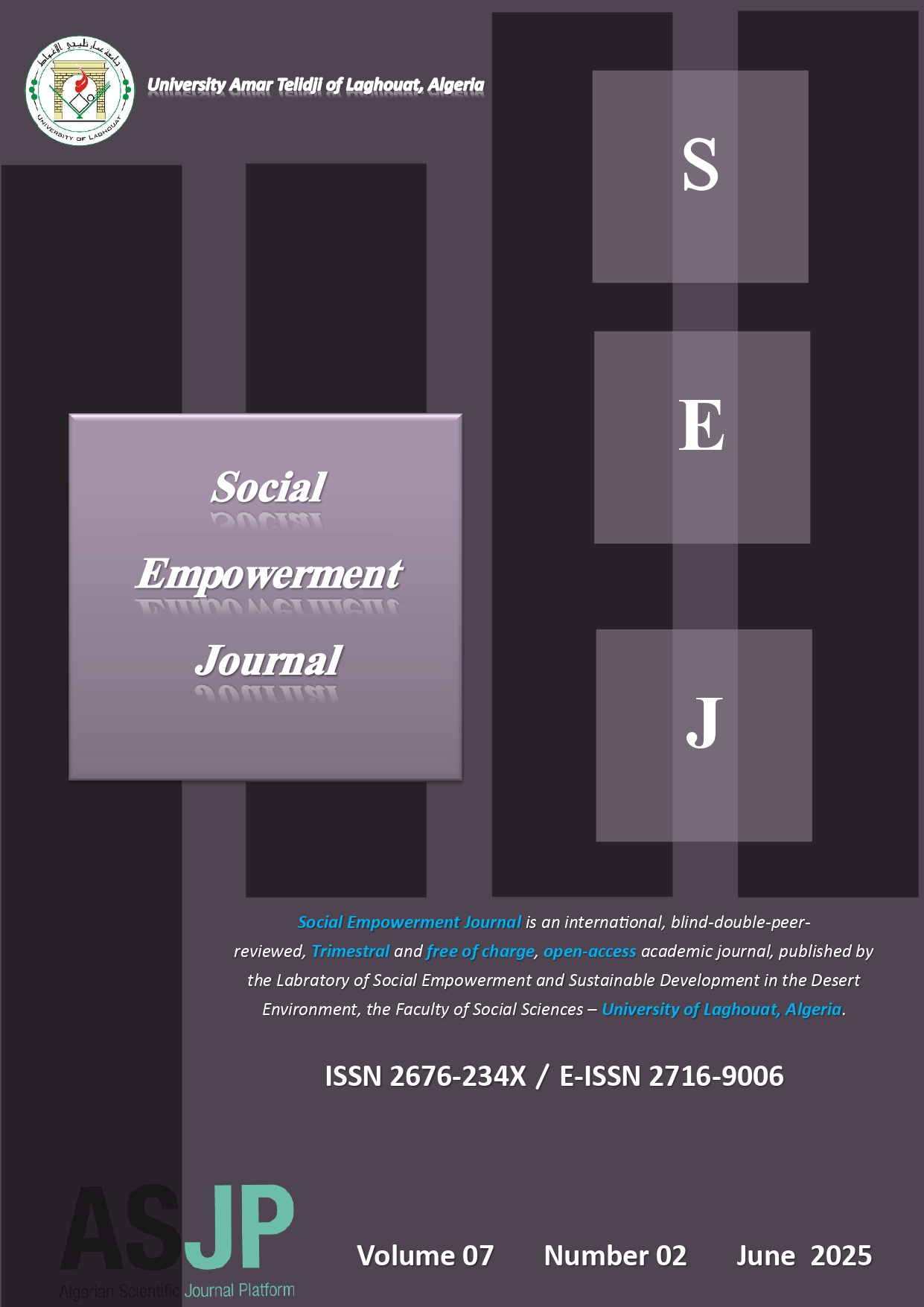Social representations of driving: An intercultural comparative study between Algerian and French drivers
الملخص
This study aims to explore the social representations of driving among Algerian and French drivers, through a comparative and intercultural approach. Grounded in the theory of social representations (Moscovici, 1961; Abric, 1994) and Hofstede’s cultural dimensions (1980), the research analyzes the influence of collectivism and individualism on the structuring of perceptions related to driving.
The study is based on a characterization questionnaire administered to two samples of drivers, and the data were analyzed using factor analyses and the central core method. Two hypotheses were tested: (H1) in Algeria, representations focus on practical aspects such as cost and the necessity of the vehicle; (H2) in France, they emphasize individual freedom and autonomy.
The results confirm significant differences: Algerians give priority to economic and safety dimensions, while the French value commitment and functionality. These findings, illuminated by the theories of Bandura (1977) and Gaymard (2014), highlight the impact of cultural context on driving behaviors.
These elements open perspectives for road safety policies tailored to the psychosocial and cultural specificities of each country.
التنزيلات
المراجع
Abric, J.-C. (1994). Social representations: Theoretical aspects. In J.-C. Abric (Ed.), Social practices and representations (pp. 11–35). PUF.
Bandura, A. (1977). Social learning theory. Prentice-Hall.
Benraad, F. (2016). Social representations of driving in Algeria. Algerian Journal of Social Sciences, 10(2), 19–35.
Flament, C. (1994). Structure, dynamics, and transformation of social representations. In J.-C. Abric (Ed.), Social practices and representations (pp. 37–57). PUF.
Flament, C. (2003). Anatomy of ordinary ideas. Armand Colin.
Flament, C. (2003). Structure and dynamics of social representations. In D. Jodelet (Ed.), Social representations (pp. 224–239). PUF.
Gaymard, S. (2003). Intercultural negotiation among Franco-Maghrebian girls: A study of social representation. L'Harmattan.
Gaymard, S. (2007). The representation of driving among young drivers: A study on conditionality in road behavior. Transport Research Safety, 97, 339–359.
Gaymard, S. (2021). The foundations of social representations: Sources, theories and practices. Dunod.
Gaymard, S. (2023). Psychology and risk prevention: Current research. Nova Main Inc.
Gaymard, S., & Tiplica, T. (2014). Conditional respect towards the pedestrian: Difference between men and women and risk modeling by the Bayesian approach. Quality and Quantity, 48(1), 91–104. https://doi.org/10.1007/s11135-012-9751-y
Hofstede, G. (1980). Culture’s consequences: International differences in work-related values. Sage Publications.
Moscovici, S. (1961). Psychoanalysis, its image and its audience. PUF.
Moscovici, S. (1981). The myth of the lonely paradigm: A rejoinder. Social Research, 51(4), 939–967.
Schwartz, S. H. (1994). Beyond individualism/collectivism: New cultural dimensions of values. In U. Kim, H. C. Triandis, Ç. Kagitcibasi, S.-C. Choi, & G. Yoon (Eds.), Individualism and collectivism: Theory, method, and applications (pp. 85–119). Sage Publications.
Triandis, H. C. (1995). Individualism and collectivism. Westview Press.
Vergès, P. (2001). The analysis of social representations by questionnaires. French Journal of Sociology, 42(3), 537–561. https://doi.org/10.2307/3323032

هذا العمل مرخص حسب الرخصة Creative Commons Attribution-NonCommercial 4.0 International License.









